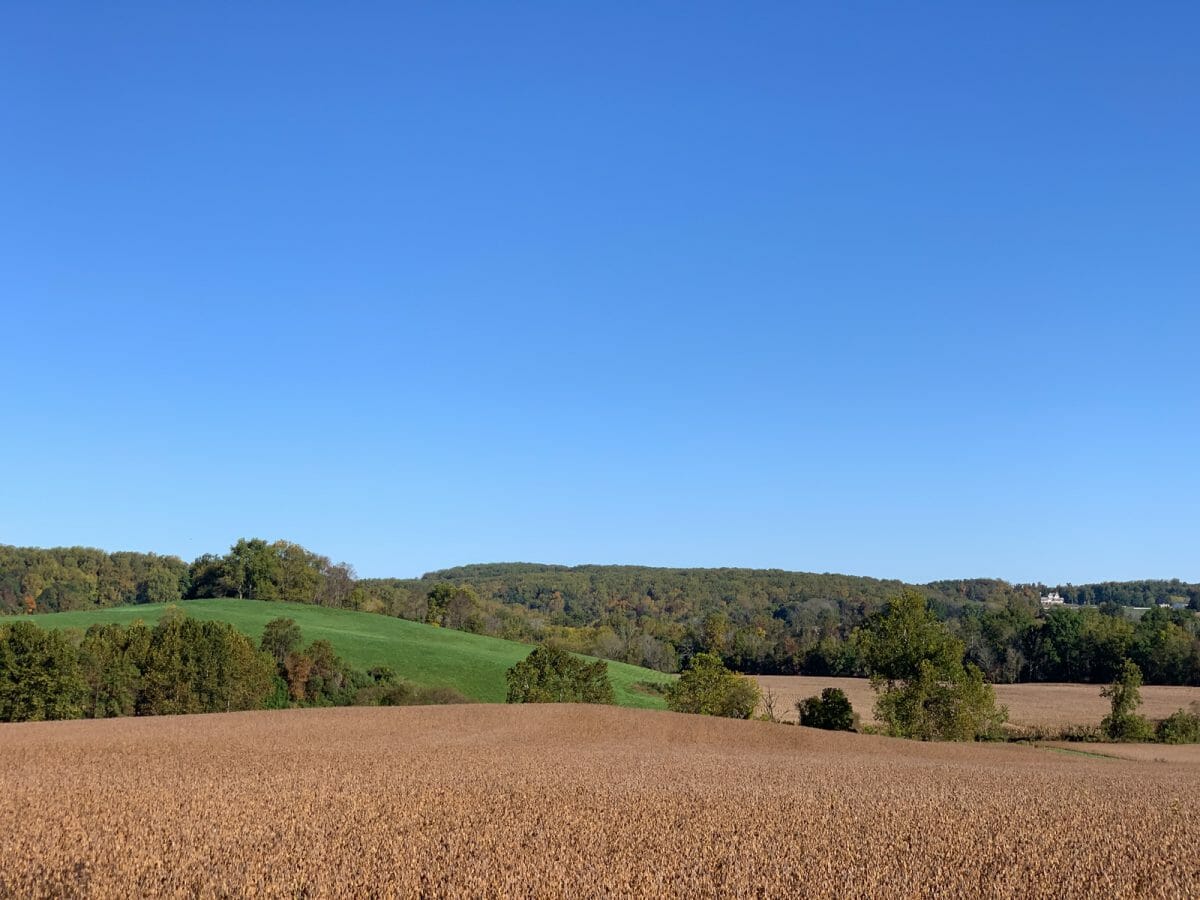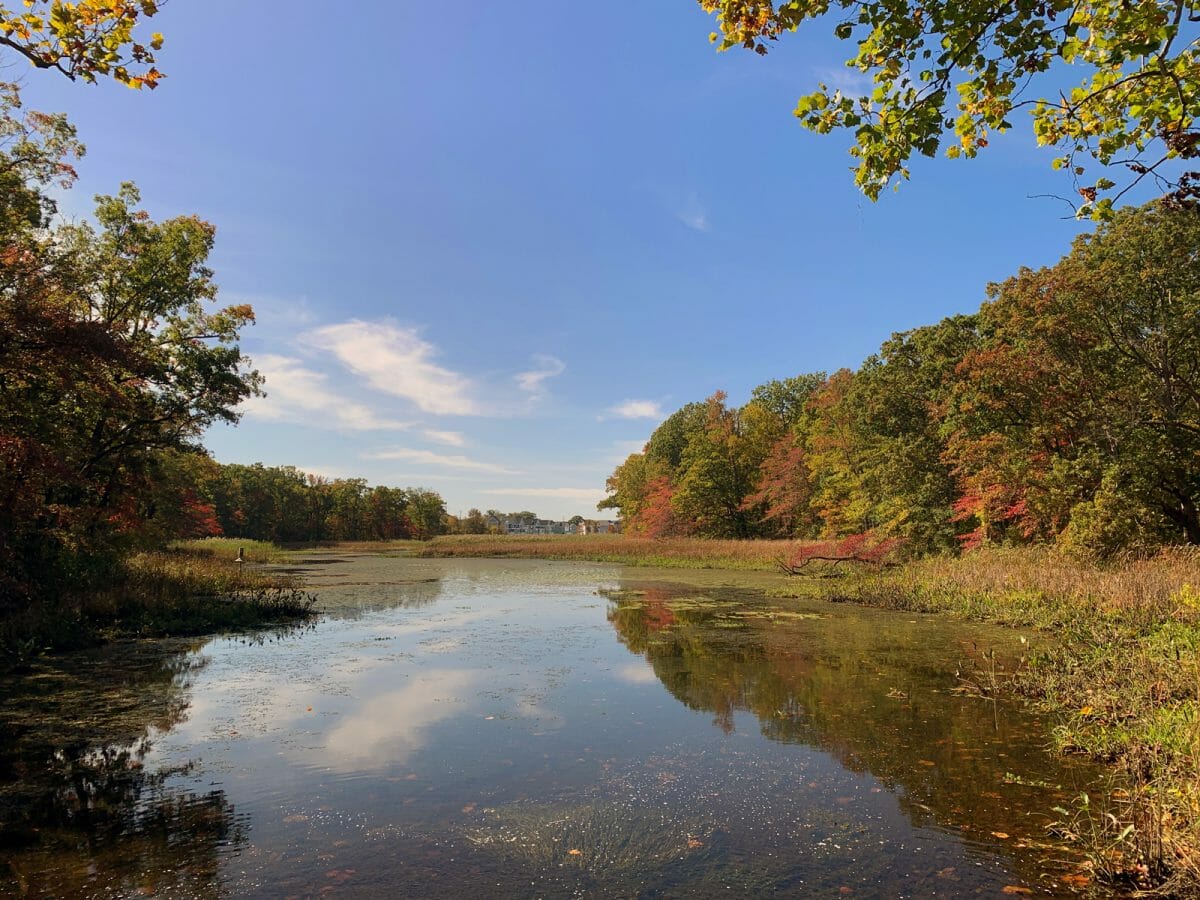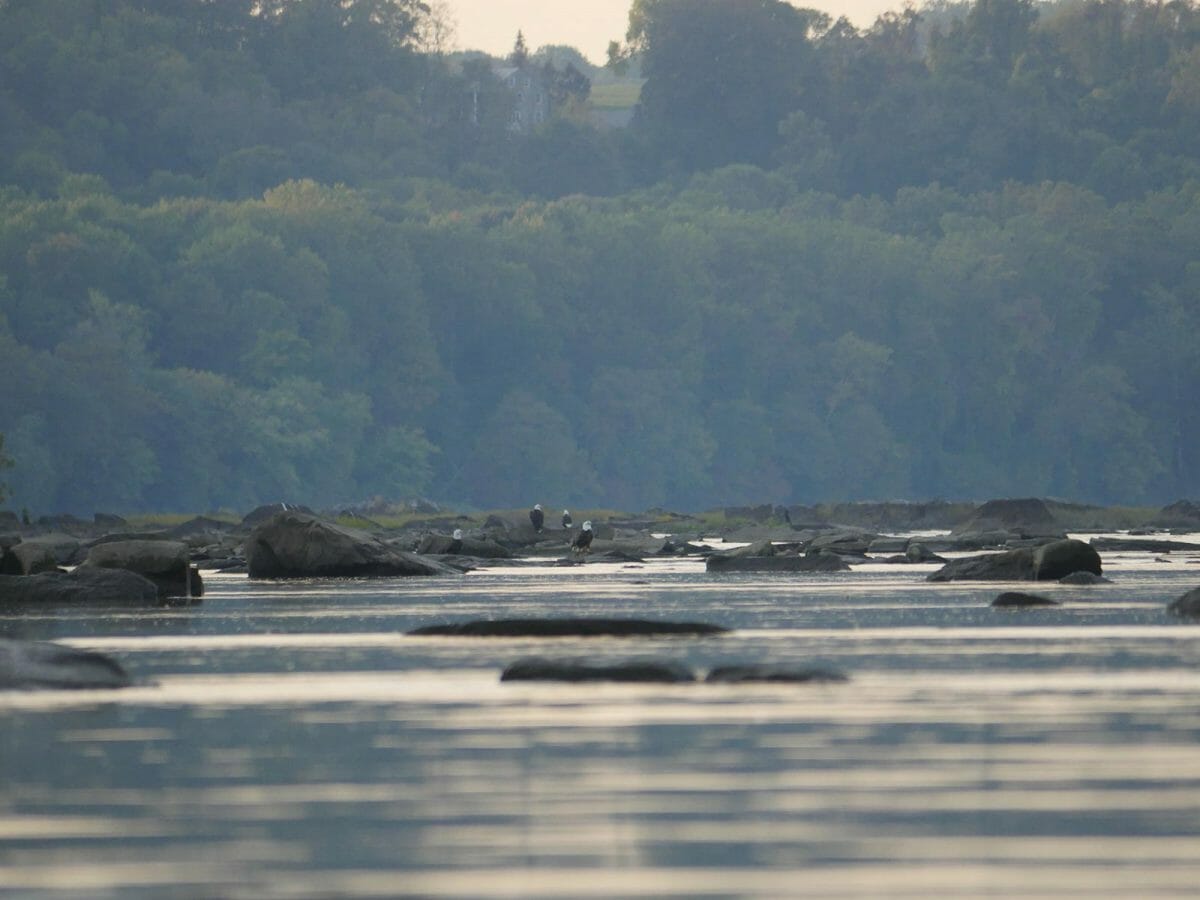News
A land legacy created by the community: Reflections from Peter Jay
December 29, 2020In 1991, a group of concerned citizens came together to protect the treasured and valuable landscapes of Harford County. Three decades later, their legacy lives on through HLT’s continued land preservation efforts.
Peter Jay, one of HLT’s founders and past presidents, shared his reflections of the organization’s origins and early years. In addition to his decades of land conservation work, Peter is a farmer, historian, writer, and waterman. He lives with his family on their preserved farm Windmill Hill north of Churchville.
Although John Hegeman was a neighbor, with a farm on Cool Spring Road near Churchville, in my younger days I didn’t know him well. Even after Irna and I hired his son Peter to work as a reporter for The Record in Havre de Grace, where for about 15 years we owned and ran Susquehanna Publishing Company, I saw John only occasionally. In addition to his farm he worked at Bethlehem Steel as an engineer, and I knew from Peter that he was building a boat in his barn. He didn’t have much time left to socialize.
But I knew he was a multi-talented and incredibly energetic man with a strong interest in conservation issues, so when he called me one day some 30 years ago and asked if I would have any interest in helping to start a local land trust, I said sure. I knew something about the land trust concept – a way to preserve open lands with minimal government involvement – and agreed to come to a meeting.
The land trust concept at that time was exemplified on a national scale by The Nature Conservancy. At the state level the legislative efforts of State Senator William James of Harford County had already produced the Maryland Environmental Trust. The Senator, to help kick off the new program, had already given an easement on his Old Bay Farm, on the water just outside Havre de Grace, and a few other local landowners had followed his lead. My father was one of them, putting an early MET easement on Windmill Hill Farm.
John Hegeman’s thought was that a local land trust could, through closer contacts with landowners, further this obviously desirable trend.
But how to get started? What exactly would be the land trust’s role? And who was going to pay for it? The questions were many, and once they were raised, quite daunting. Probably that was why there weren’t many local land trusts around in 1990.
John called several people he thought might be interested, and set up a meeting. One of those he called was Dr. Sidney Kreider, a Johns Hopkins physician who had a small farm in Harford County near Churchville. Dr. Kreider and his wife Millie had already been involved with rural real estate as investors, and they had an empty office in their barn. That was where the first discussions of a Harford land trust took place.
All that happened 30 years ago, a little more than half an adult lifetime. I think it’s safe to say that those at that first meeting, in 1990, weren’t thinking much about 2020. But they might have been thinking about 1960, and how Harford County had changed in the preceding 30 years.
They might have remembered that in 1960 the Harford County schools had not been desegregated. That didn’t happen until 1965. They might have recalled that in 1960 raw sewage from the city of Havre de Grace was regularly discharged into the Susquehanna River. They probably would have known that in 1960 every Maryland county, regardless of size, had one state senator. (Baltimore City had six.) Harford’s lone senator in 1960 was Senator James.

By the standards of the future, then, the Harford County of 1960 was in many ways backward. There were no McDonalds. If you wanted to buy a bottle of bourbon you had to go to a county-owned dispensary. There was no I-95. If you wanted to drive to New York you took Route 40 until you got to the New Jersey Turnpike. Just about all the main highways, including Routes 24, 22, 155, and 1, were lined with farms. There were no malls. The only hospital was in Havre d Grace.
But backward or not, Harford County in 1960 had been spectacularly and almost unbelievably beautiful, and by 1990 that rural beauty was, if not gone, much less apparent and constantly threatened. And that is why, in 1990, five people who didn’t know each other very well got together in Dr. Kreider’s barn office to talk about the county and its future.
In addition to John Hegeman, they were Dr. Kreider, a physician associate of his named Al Owens, David Miller, and me. David Miller was someone I had met before in my capacity as a columnist for the Baltimore Sun; he had been involved as a staff person in several Maryland conservation projects, most recently with the Maryland Environmental Trust. He would become the Harford Land Trust’s executive director and, for several years, its only employee.
We agreed at that meeting to take the first baby steps toward creating a new organization, including choosing a name, electing some officers, and registering with the appropriate government offices, most importantly the Internal Revenue Service. We didn’t know much, at that time, but we did know that if we were going to ask people to make donations to our new entity, those donations should qualify as charitable deductions.
John said he was willing to tackle the IRS, so we made him president, which seemed appropriate anyway. David Miller was named secretary and I was named vice president. We would need a treasurer too, and I can’t recall whether Sid Kreider agreed to fill that slot temporarily or whether we left it vacant. I believe Dorothy Bishop was our first working treasurer, but don’t recall just when she came on board.

At that first meeting, we considered various names for the organization, and after rejecting a few other suggestions settled on the rather prosaic “Harford Land Trust.” We wanted to make it clear that our focus would be countywide. I think “Deer Creek Land Trust” was proposed, but we rejected it as too local, and also out of concern that it would be confused with the Deer Creek Watershed Association, which was already in existence.
Often, volunteer organizations such as HLT spring up in response to a specific situation – typically, the proposed development of a special farm or another tract of open land. At HLT, our concerns were more general.
As noted above, we all knew Harford County was changing rapidly, and we knew that whether we liked that or not, it was going to keep on happening. We were simply looking for ways, not to block that inevitable change, but to preserve some of today’s special places for tomorrow. Those of us at that initial meeting may have had some potential projects in mind, but at that first meeting, we put the specifics aside and concentrated on the organizational details.
One issue we did discuss – and here John Hegeman and I were in complete agreement – related to the new organization’s political coloration. John and I had both noted how the Nature Conservancy and its director then, Pat Noonan, had resolutely avoided politics, to the clear benefit of the Conservancy’s land-preservation mission. We thought HLT should adopt a similar approach, and not become another “green” organization with a political agenda, constantly appearing before the legislature or the County Council and taking positions on issues that did not relate to land preservation.
We knew that would be a challenge, but felt that if HLT could meet it, its chances of succeeding over time would be significantly improved, and its support in the greater Harford County community would be broadened. Many of HLT’s leaders and good friends over the past 30 years shared that view, and I believe the organization has benefited.
From that first meeting in Sid Kreider’s barn, HLT moved ahead steadily, if also perhaps cautiously. Some projects which had seemed out of reach turned out to be doable; others, some of them very attractive, never happened, generally because they needed more money that we could raise, or just didn’t work for other reasons. An example of the latter was Garrett Island in the Susquehanna, a fascinating place just off the Havre de Grace waterfront. HLT (encouraged by me, I must admit) was tempted to get involved with the island, but there was one major problem: It is in Cecil County. Eventually, with help from both Harford and Cecil County residents, the new Cecil Land Trust stepped up and helped bring about long-term protection for the island.

HLT’s first success was along the Bush River at Forest Greens. That venture not only saved some important land near the Bush River from threatened development and generated great community support, but taught HLT useful lessons and made it some long-term friends. (Harry Webster, who first worked with HLT on Forest Greens, later became the organization’s president and one of its most effective leaders.) John Hegeman, I recall, worked very hard on that project. One reason he found it especially appealing was that it was located in the middle of a suburban community, and demonstrated that the new organization, the Harford Land Trust, had broader and more diverse concerns than its critics – and there were some – wanted to concede.
During John Hegeman’s tenure as president of HLT, a variety of Harford County people served on the board and brought a diversity of skills to the job of protecting important Harford County acreage. Some stayed only briefly, others for many years. Thinking back to the early days, I’d like to mention two. One is Turney McKnight, who I think is probably the board member with the longest service, and who has contributed in many different ways over the past three decades. The other is Dr. Lehman Spry, who was HLT’s vice president at the time of John Hegeman’s death in 1997 and who succeeded John as president. Lehman, a Havre de Grace dentist who had served on the county council, was like John Hegeman both tireless and multi-talented, with great perception about Harford County’s past and future. He deserves enormous credit for keeping HLT moving forward after the Hegeman era, and like John, he left us much too soon.

